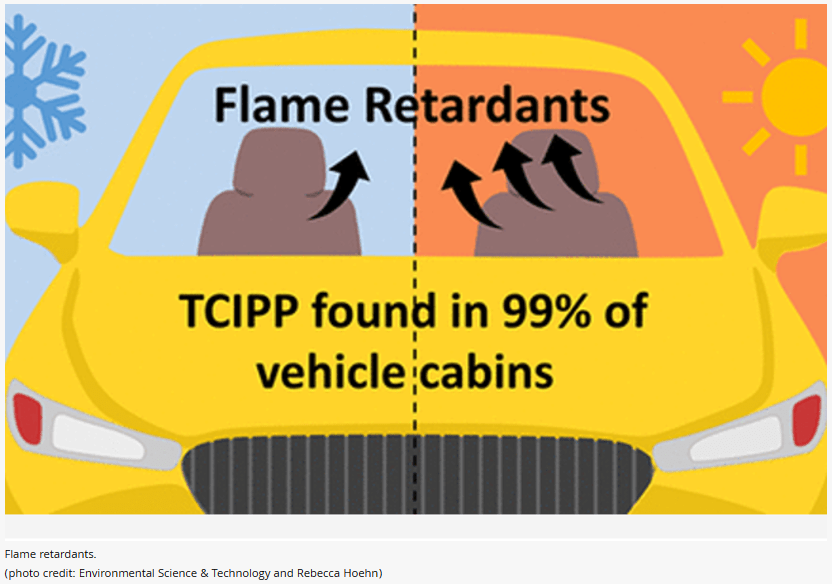|
Getting your Trinity Audio player ready...
|
You’re bought a car, protected even from a fingerprint with plastic bags. Congratulations! But you are unaware that the air inside all personal vehicles is polluted with harmful flame retardants – including those known or suspected to cause cancer.
The danger of flame retardants
The researchers detected flame retardants inside the cabins of 101 cars (model year 2015 or newer) from across the US. Fully 99 % of cars contained tris (1-chloro-isopropyl) phosphate (TCIPP), a flame retardant under investigation by the US. National Toxicology Program as a potential carcinogen. Most cars had additional organophosphate ester flame retardants present, including tris (1,3-dichloro-2-propyl) phosphate (TDCIPP) and tris (2-chloroethyl) phosphate (TCEP), two California Proposition 65 carcinogens. These and other flame retardants are also linked to neurological and reproductive harms.
The researchers also analyzed samples of seat foam from 51 of the cars in the study. Vehicles that contained the suspected carcinogen TCIPP in their foam tended to have higher concentrations of TCIPP in their air, confirming foam as a source of this flame retardant in cabin air.
“Firefighters are concerned that flame retardants contribute to their very high cancer rates,” said Patrick Morrison, who oversees health and safety for 350,000 North American firefighters who are members of the International Association of Fire Fighters. “Filling products with these harmful chemicals does little to prevent fires for most uses and instead makes the blazes smokier and more toxic for victims, and especially for first responders. I urge the US National Highway Traffic Safety Administration (NHTSA) to update their flammability standard to be met without flame retardant chemicals inside vehicles.”



